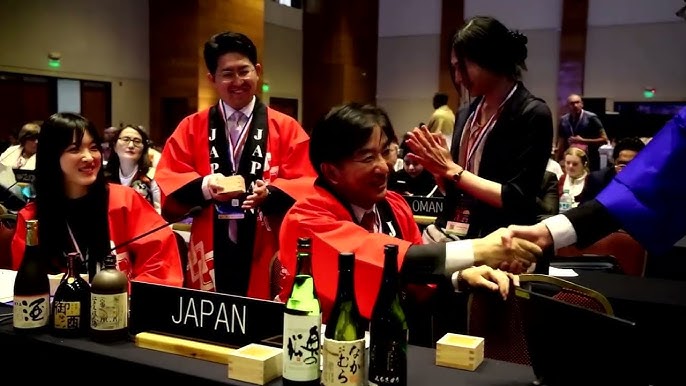Japanese sake is a UNESCO intangible cultural heritage
The UN body gave its approval yesterday recognising the traditional alcoholic beverage, the product of an ancient technique of fermenting rice and other ingredients using "koji" moulds. For makers, it is an opportunity to promote it at home and abroad. For 2026, the government wants to have "shodo" calligraphy listed.
Tokyo (AsiaNews) – Traditional Japanese knowledge and skills used in the making of sake and shochu spirits have become a UNESCO Intangible Cultural Heritage.
A committee of the UN Educational, Scientific and Cultural Organisation gave their approval yesterday, recognising the ancient technique of brewing rice and other ingredients with the use of koji moulds, a unique production method that includes multiple fermentations occurring simultaneously in a single vessel.
The decision, which marks Japan's 23rd entry on the list, comes after a UNESCO advisory panel recommended its inclusion in November, Kyodo News reported. For supporters, this highlights its importance and status in Japanese culture, tradition and society.
The panel noted that sake production is essential for traditional Japanese events, like rituals and weddings, and brings together local communities.
Being listed helps sake brewers to boost exports, revitalise local economies, and pass down traditional skills to the next generations amid shrinking domestic consumption.
Prime Minister Shigeru Ishiba welcomed the UN body's decision, saying in a statement that sake brewing is a “technique that we can boast to the world.”
What is more, “We will hand it down to the next generation and use this chance to promote regional revitalization and expand the business overseas,” he added.
The listing was eagerly anticipated by the industry, with some 20 representatives of the Sake and Shochus Makers Association gathered to watch the announcement in Kumamoto, southwestern Japan.
While the crowd clapped and cheered at the news, Masaharu Honda, the association’s 70-year-old director gave a toast to celebrate with locally brewed sake. “This is a cup of sheer joy," he said.
Marika Tazawa runs a travel agency that organises brewery tours with overnight stays in Nagano Prefecture (central Japan) for people who want to experience sake-making. In her view, “This will be a strong encouragement for the industry. I hope it leads to more recognition and improvement in status.”
The list of Japan’s traditionally made spirits include sake, shochu, awamori, and mirin sweet rice cooking wine.
Awamori, which is produced in Okinawa Prefecture, is regarded as Japan’s oldest distilled spirit. Its traditional production method dates back some 600 years, inherited from the Ryukyu Kingdom, annexed by Japan in 1879.
The formal approval at UNESCO's intergovernmental committee session in Asunción (Paraguay) came after the Japanese government put forward sake brewing in 2022 for listing.
Japan’s intangible heritage also includes the performing arts Noh and Kabuki and the country’s traditional cuisine (washoku).
At present, the Japanese government is trying to have shodo calligraphy listed as an Intangible Cultural Heritage in 2026, when the UN body is scheduled to hold its next biennial screening of nominations.
08/11/2025 15:08
16/12/2019 15:31







.png)










